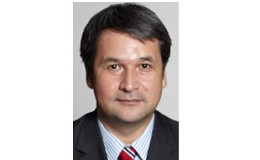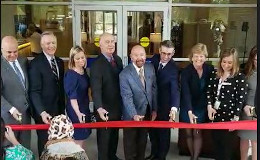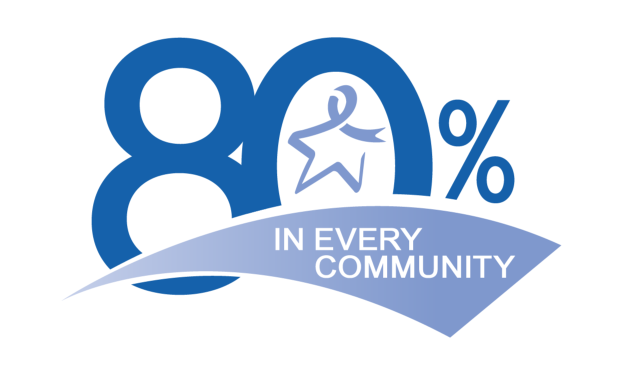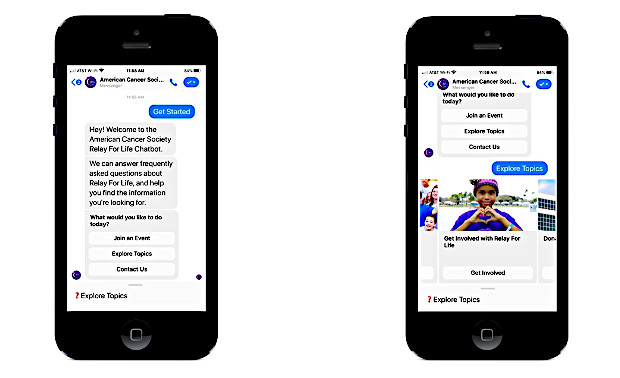Saturday, February 29, 2020
Wednesday, February 26, 2020
Tuesday, February 25, 2020
Monday, February 24, 2020
Local Fundraising Challenges

Fundraising and team building challenges are a fun way to bring out the competitive side of our Relay participants. This year, instead of hosting a nationwide fundraising challenge, the American Cancer Society is asking each Relay For Life event across the country to implement a fundraising challenge at the local level. As you work with your volunteer committees to plan challenges, please use the information in this guidebook to steer your strategy, communications, and reporting efforts. This information has been collected to ensure that your challenge reaches its full potential and best engages participants.
Timeline: Keep challenges short. Challenges are a great way to get Relay For Life participants excited, but if a challenge is too long they will lose interest. Take advantage of their enthusiasm and ask individuals to complete tasks in a short time period. Challenges can be as short as 24 hours and should not last longer than one week. Also, review when any other challenges were implemented for this Relay For Life event; too many challenges will cause them to lose their appeal. It is strongly suggested that local events implement a fundraising challenge 1-4 weeks out from their event date.
Simple is best: While we want Relay For Life participants to complete a variety of activities to fully engage their fundraising potential, too many rules or actions can be over whelming. Focus challenges on one or two criteria only. You should ensure that the data collection is simple. The winner should be determined by a quick report from the Event Management Center (or if multiple events, through a report request form).
Guidelines: Set clear parameters to the challenge. Be sure to define what it takes to win the challenge and if there are any additional factors to the tasks (must raise a minimum amount to qualify, etc.). Include the rules of your challenge in all communications about this competition. Be sure to also talk to your ACS legal department representative to ensure that the challenge does not violate any state laws. Connect with a member of the Finance Field Services team to discuss any implications the prize or award may have on sales tax or income reporting for ACS or the recipient of the prize.
Prizes: Find a prize that participants will be excited for. Ask committee members or team leaders what they would be most interested in receiving; prizes can vary throughout the Relay For Life season to include primary campsite selection or special signage (pre-event), special gift bag, to an electronic giveaway. Sometimes the best prize is bragging rights or something your event can offer for free – like reserved parking, campsite set up/tear down, or special tent placement. If you are purchasing a prize, ensure that the cost of the prize receives a return on the investment; work with your Senior Manager for assistance and budget recommendations. Additionally, connect with a member of the Finance Field Services team to discuss any implications the prize or award may have on sales tax or income reporting for ACS prior to announcing, advertising or posting the prize, to the potential recipients.
Communication: Email, SMS messaging, social media, website updates, and meeting announcements are great ways to communicate about the Relay For Life challenge. Plan out communications to implement throughout the challenge including: teaser message, introduction/kickoff message, engagement messages, and a post-challenge winner message. Be sure that your communication matches your audience as well. If you’re unsure about the SMS Texting status of one or more of your events, and you want to use SMS Texting in one of your local Online Challenges, please reach out to William.ball@caner.org and he’ll be happy to assist you.
Remember the mission: While we are encouraging fundraising activities, remember that the purpose for this challenge is to fight cancer. Include a mission message that humanizes why we continue to fundraise or recruit people to Relay For Life ($x will ensure that x happens). Ask a local survivor or caregiver to provide a quote about why they participate and how our fundraising has helped him/her.
Double the money: Consider finding a sponsor who is willing to match all money raised (or up to a certain amount) for this challenge. Benefits to the sponsor could include their name and logo being used in all emails, social media posts, etc.
Challenge Ideas
$48 in 48: Over a 48-hour period, all registered participants are encouraged to raise $48 or more. Those who complete this challenge will receive a small token
Most Online Funds Raised: Over a specific time period, all registered participants are encouraged to raise as much money through credit card donations as possible. The individual or team that raises the most only in the designated time period wins a prize. (Keep in mind, credit card donations scanned through the app don’t count as online, donations must be processed through the event website.)
“Just Imagine” Challenge: A one-week, mission focused campaign which brings together our fundraising participants to the dream of a cancer free world. We will highlight four different American Cancer Society programs and services: Transportation, Lodging, Research, and NCIC. The challenge will be for individuals to raise an additional $100 during this one-week period, asking them to “just imagine” the impact that every dollar will make towards a cancer free world. If you choose this challenge, we recommend you implement one week before your t-shirt deadline so people can qualify for the Hope Club shirt.
Home Stretch Challenge: A fundraising challenge in the last 72 hours prior to event. Event participants work together as a community to raise a set amount of money- if the event hits that goal, they can have a big ticketed item at their event (possibly a purple chair, arch, inflatable screen, etc.)
*Taken from the Brand Toolkit, get the Local Fundraising Challenge Toolkits.
Sunday, February 23, 2020
ACS study identifies states with highest UV-associated melanoma burden
The range is 15 cases per 100,000 in Alaska to 65 cases per 100,000 in Hawaii
A new study finds a wide state-by-state variation in rates of melanoma caused by ultraviolet (UV) exposure with highest rates in several states on the East and West Coast including Hawaii, but also a few landlocked states, including Utah, Vermont, and Minnesota. The report, appearing in the International Journal of Cancer, finds state-level incidence rates for UV-attributable melanoma ranged from 15 cases per 100,000 in Alaska to 65 cases per 100,000 in Hawaii. The authors say variations between states likely reflect a combination of the strength the sun’s rays, participation in outdoor activities, sun protection, indoor tanning, and early detection.
For the new study, investigators led by Farhad Islami, MD, PhD (pictured here) estimated the number, proportion, and incidence rates of malignant melanomas attributable to UV radiation in each state. They did so by calculating the difference between observed melanomas during 2011-2015 and a baseline of expected cases.
Estimating the contribution of UV exposure required a novel approach. Without a population completely unexposed to UV radiation, researchers used the best data available: historical melanoma incidence rates from 1942-1954 in Connecticut, which had the country’s first statewide population-based cancer registry and is in a high-latitude (generally lower UV rate) environment. For most adults, melanomas diagnosed during those years likely reflected UV exposure accumulated in the 1930s or earlier, when exposure was minimized by clothing style with more complete skin coverage and limited recreational exposure. This reference population acted as the theoretical minimum UV exposure.
UV-exposure accounted for 91.0% (338,701/372,335) of the total melanoma cases diagnosed during 2011-2015 in the United States; 94.3% (319,412) of UV-attributable cases occurred in non-Hispanic whites.
To highlight state differences, researchers highlighted results for non-Hispanic whites rather than the total population, because a lower burden in some states could largely reflect higher proportions of non-whites in the population. Melanoma incidence rates in the United States are lowest in blacks (1.0 per 100,000) and are also substantially lower in other minorities (e.g., 4.5 per 100,000 in Hispanics) than in non-Hispanic whites (27.2 per 100,000).
By state, the attributable age-standardized rate among non-Hispanic whites ranged from 15.1 per 100,000 in Alaska to 65.1 in Hawaii. Multiple states along the East and West Coast had UV-attributable incidence rates exceeding 25 per 100,000 among non-Hispanic whites: Delaware (37.1), Georgia (36.5), California (33.8), Maryland (32.6), North Carolina (29.5), Florida (29.2), Oregon (28.5), South Carolina (28.1), Washington (27.8), New Jersey (27.7), New Hampshire (26.5). Rates were also above 25 per 100,000 in Alabama (25.4) and several landlocked states: Utah (40.4), Vermont (31.4), Minnesota (27.9), Idaho (27.6), Kentucky (25.7), and Colorado (24.5).
In addition to states with a high UV index like Hawaii, California, and Florida, UV-attributable melanoma rates are high in many states with relatively low UV index, such as Minnesota and Idaho, likely reflecting high prevalence of outdoor activities (e.g., going to beaches, lakes, or outdoor swimming pools; recreational boating; skiing; and perhaps occupational activities such as farming) and insufficient sun protection. Many UV-related melanomas are preventable using appropriate measures.
The report also finds higher UV-attributable melanoma burden in younger females than males. “High indoor tanning prevalence among teen girls in the late 1990s is likely a contributing factor,” said Farhad.
Article: Cutaneous melanomas attributable to ultraviolet radiation exposure by state; Int J of Cancer 2020; doi 10.1002/ijc.32921

*Re-posted from MySocietySource.
Saturday, February 22, 2020
Leap Day Challenge
Together, we
can fund a potentially lifesaving cancer research grant in 1 day.
Join Relay For Life on February 29 for 1
Day of Change, a 2020 Leap Day event with a simple but significant goal: to
raise $175,000 – the average cost to fund a research grant for an early career
scientist.
*Taken from the Brand Toolkit, get the Leap Day Challenge Toolkit.
Friday, February 21, 2020
Ceremonial ribbon-cutting celebrates our new Hope Lodge in Jacksonville
Florida Lodge opened Jan. 6 and is already is at capacity.
On Tuesday, Feb. 4, a ceremony and ribbon-cutting was held for the Richard M. Schulze Family Foundation American Cancer Society Hope Lodge in Jacksonville, FLA. It was broadcast live on the ACS Florida Facebook page.

Among those attending were Best Buy founder Richard Schulze, and Gary Reedy, our CEO.
Schulze created the Richard M. Schulze Family Foundation in 2004 to give back to the communities in Minnesota and Florida where he and his family lived.
This Lodge is the third one built on Mayo Clinic property. Mayo Clinic has been a strong partner, supporting our Road to Recovery program which provides free rides to patients in cancer treatment. Mayo Clinic is also an ACS research grant recipient for its work in lung cancer research in Jacksonville.
This 32,000-square-foot facility has 30 guest suites. Two adults can occupy each suite.
*Re-posted from MySocietySource.
Thursday, February 20, 2020
National Love Your Pet Day
Today is National Love Your Pet Day. The American Cancer Society Bark For Life is a fundraising event honoring the life-long contributions of our canine caregivers. These dogs demonstrate unconditional love, joy, compassion, and no judgments of cancer survivors’ abilities or appearances.
Wednesday, February 19, 2020
Register now for the Annual Colorectal Cancer Awareness Month Webcast
Thursday, March 5, 11 a.m. - 2 p.m.
The National Colorectal Cancer Roundtable (NCCRT) and the American Cancer Society will kick off Colorectal Cancer Awareness Month with our annual webcast, featuring Rich Wender, MD, our chief cancer control officer and NCCRT chair, and other special guests. It will mark the second year of the 80% in Every Community campaign.

The annual webcast celebrates the exciting work that is happening around the country to increase colorectal cancer screening and spread awareness that screening saves lives. This year, we’ll look back on our shared successes, get updates from the field, and meet the winners of the 2020 80% in Every Community National Achievement Awards. The webcast will include a special focus on the role employers can play in promoting colorectal cancer screening.
Volunteers, individuals, and organizations are invited to join the webcast, which will be broadcast live from ACS headquarters in Atlanta.
Visit the event webpage to learn more and to register.
*Re-posted from MySocietySource.
Tuesday, February 18, 2020
Monday, February 17, 2020
Training: Facebook- Boosting Posts And Ads
The first training for 2020 has been posted - tips for organic post reach on Facebook and a demonstration for boosting posts. We know its hard to get your messages in front of your intended audience, so we pulled together some tips to help! https://connect.relayforlife.org/blogs/668/2015
*Shared from Facebook Nationwide Relay For Life Online Chair Network.
Sunday, February 16, 2020
ACS launches Relay For Life chatbot via Facebook Messenger
Chatbot helps maximize customer self-service by answering common questions
The American Cancer Society recently launched a new chatbot within the Facebook Messenger platform on the American Cancer Society Relay For Life Facebook page. This chatbot focuses on helping consumers quickly find answers to commonly asked questions related to Relay For Life.

These common themes were identified for why a customer would use the Messenger platform before creating this unique chatbot.
- General Relay For Life information
- How to find a local event
- How to donate
- How to dedicate a luminaria
- How to fundraise
This chatbot will help customers find answers to their questions by providing information, videos, or links where applicable. When a more complex answer is required, such as a specific cancer related question, the chatbot will guide them to call NCIC or use Live Chat on cancer.org.
Users can access the chatbot on their mobile device or computer by visiting the American Cancer Society Relay For Life Facebook page and clicking "Send Message". A customer will then be able to choose to join an event, explore topics, or contact us with one click.
A similar chatbot for the American Cancer Society Making Strides Against Cancer Facebook page will be coming soon.
*Re-posted from MySocietySource.
Saturday, February 15, 2020
ACS and Red Cross launch campaign to increase blood donations
Starting on February 10, the American Cancer Society and American Red Cross will kick off a three-week campaign to encourage people across the country to Give Blood to Give Time.
Did you know that nearly 25% of the blood supply in the U.S. goes to cancer patients - more than patients fighting any other disease?
This joint campaign will include a national television PSA, social media, outdoor advertising, digital programs, and public relations, all driving people to GiveBloodToGiveTime.org, where they can type in their ZIP code and make an appointment to donate blood or platelets.
Model Cindy Crawford is the national spokesperson for this campaign. Previously an ambassador for the Red Cross, Cindy’s brother died at an early age from leukemia, so she also supports cancer causes. During her brother’s treatment, ACS helped her family with access to transportation.
For those undergoing chemotherapy treatments while battling cancer, a blood transfusion is a meaningful way to give them the strength to keep fighting. According to the American Red Cross, five units of blood are needed every minute of every day to help someone going through cancer treatments. Yet, only 3% of the American public donates blood in a given year.
Interestingly, Gail McGovern, president and CEO of American Red Cross, and her husband are both cancer survivors. In an email to all of her staff today, she wrote: "I know from experience that a loved one’s diagnosis can make family and friends feel helpless. They often don’t realize that individuals can make a difference by giving blood and platelets."
The need is great; how you, your friends, and family can help
During the campaign, from Feb. 10 to Feb. 29, visit GiveBloodToGiveTime.org and set up an appointment to give blood or platelets. A whole blood donation takes about an hour from start to finish, but the actual donation itself only takes about 8-10 minutes. Platelet donation may take up to two and a half hours, and a Power Red donation is about an hour and 15 minutes long. A Power Red donation allows you to safely donate two units of red blood cells during one donation.
Donors of all blood types, especially type O, and platelet donors are urgently needed. Platelets – a key clotting component of blood often needed by cancer patients, surgical patients, and bone marrow transplant recipients – must be transfused within five days of donation, so there is a constant, often critical, need for platelets to keep up with hospital demand.
Donations of money are welcome, too!
The public will have the option to select which organization to donate to through the campaign landing page. Donations will be processed through each organization’s standard donation process.
Help spread the word!
Let everyone you know about the campaign, and direct them to GiveBloodToGiveTime.org.
Feel free to post it on your social media sites and use the hashtag #GiveBloodToGiveTime.
There is no specific call to action for our Relay For Life, Making Strides Against Breast Cancer, and Distinguished events audiences at this time.
*Re-posted from MySocietySource.
Neuroendocrine Patient Conference
2020 San Francisco Bay Area NET Patient Conference
Neuroendocrine Cancer Patients and their families are invited on Sunday, March 8, 2020 for a day of discussion on the latest developments in neuroendocrine tumor (NET) research and treatment. Topics will range from discovery and diagnosis through treatment and living with cancer, and feature experts from Stanford, UCSF and other institutions from around the world. The conference is open to patients, caregivers and those interested in NETs.
We are honored to have as our keynote speaker, Rebecca Katz, chef and author of numerous cookbooks, including "The Cancer Fighting Kitchen."
The conference will be on the campus of Stanford University, hosted by Stanford Medicine's Neuroendocrine Tumor Program and NorCal CarciNET Community.
*Shared from NorCal CarciNET Community.
Friday, February 14, 2020
Thursday, February 13, 2020
Internet Friends Day
Today is Internet Friends Day where we honor our virtual friends. Numerous Internet friends share greetings on this day, especially in social networks. The hashtags #InternetFriendsDay and #InternetFriendDay are used to mark such messages. Make your own new Internet Friends on the Relay For Life Community Facebook group.
Subscribe to:
Posts (Atom)






































